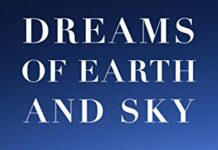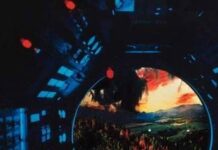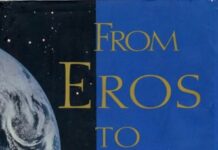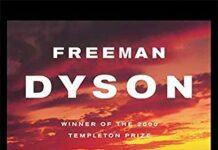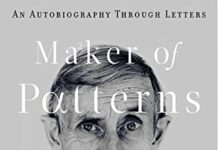
Ebook Info
- Published: 2014
- Number of pages: 387 pages
- Format: PDF
- File Size: 1.51 MB
- Authors: Freeman Dyson
Description
From Galileo to today’s amateur astronomers, scientists have been rebels, writes Freeman Dyson. Like artists and poets, they are free spirits who resist the restrictions their cultures impose on them. In their pursuit of nature’s truths, they are guided as much by imagination as by reason, and their greatest theories have the uniqueness and beauty of great works of art.Dyson argues that the best way to understand science is by understanding those who practice it. He tells stories of scientists at work, ranging from Isaac Newton’s absorption in physics, alchemy, theology, and politics, to Ernest Rutherford’s discovery of the structure of the atom, to Albert Einstein’s stubborn hostility to the idea of black holes. His descriptions of brilliant physicists like Edward Teller and Richard Feynman are enlivened by his own reminiscences of them. He looks with a skeptical eye at fashionable scientific fads and fantasies, and speculates on the future of climate prediction, genetic engineering, the colonization of space, and the possibility that paranormal phenomena may exist yet not be scientifically verifiable. Dyson also looks beyond particular scientific questions to reflect on broader philosophical issues, such as the limits of reductionism, the morality of strategic bombing and nuclear weapons, the preservation of the environment, and the relationship between science and religion. These essays, by a distinguished physicist who is also a prolific writer, offer informed insights into the history of science and fresh perspectives on contentious current debates about science, ethics, and faith.
User’s Reviews
Reviews from Amazon users which were colected at the time this book was published on the website:
⭐And I paraphrase Mr. Dyson; at Chapter 13, pp 133-38: “In January 1939 a meeting of physicists was held at George Washington University in Washington, D.C. The meeting had been planned by George Gamow long before fission was discovered. It was one of a regular series of annual meetings. It happened by chance that Neils Bohr arrived in America two weeks before the meeting, bringing from Europe the news of the discovery of fission. Gamow quickly reorganized the meeting so that fission became the main subject. Bohr and Enrico Fermi were the main speakers. For the first time, the splitting of the atom was publicly described, and the consequent possibility of atomic bombs was widely reported in the newspapers. Not much was said at the meeting about atomic bombs. Everyone at the meeting was aware of the possibilities, but nobody spoke up boldly to suggest that questions of ethical responsibility be put on the agenda. The meeting came too soon for any consensus concerning ethical responsibilities to be reached. Most of the people at the meeting were hearing about fission for the first time. But it would have been possible to start a preliminary discussion, to make plans for an informal organization of physicists, and to prepare for further meetings. After several weeks of preparations, a second meeting might have been arranged with the explicit purpose of reaching an ethical consensus. …(By 1941, the) fear of Hitler was so pervasive that hardly a single physicist who was aware of the possibilities of nuclear weapons could resist it. The fear allowed scientists to design bombs with a clear conscience. In 1941 they persuaded the British and American governments to build the factories and laboratories where bombs could be manufactured. It would have been impossible for the community of British and American physicists to say to the world in 1941, “Let Hitler have his nuclear bombs and do his worst with them. We refuse on ethical grounds to have anything to do with such weapons. It will be better for us in the long run to defeat him without using such weapons, even if it takes a little longer and costs us more lives.” Hardly anybody in 1941 would have wished to make such a statement. And if some of the scientists had wished to make it, the statement could not have been made publicly, because all discussion of nuclear matters was hidden behind walls of secrecy. The world in 1941 was divided into armed camps with no possibility of communications between them. Scientists in the Soviet Union were living in separate black boxes. It was too late in 1941 for the scientists of the world to take a united ethical stand against nuclear weapons. The latest time that such a stand could have been taken was in 1939, when the world was still at peace and secrecy not yet been imposed….In October of 1995, I was giving a lunchtime lecture to a crowd of students at George Washington University about the history of nuclear weapons. I told them about the meeting that had been held in a nearby building on their campus in January 1939. I told them how the scientists at the meeting missed the opportunity that was fleetingly placed in their hands, to forestall the development of nuclear weapons and to change the course of history. I talked about the nuclear projects that grew during World War II, massive and in deadly earnest in America, small and halfhearted in Germany, serious but late-starting in Russia. I described the atmosphere of furious effort and intense camaraderie that existed in wartime Los Alamos, with the British and American scientists so deeply engaged in the race to produce a bomb that they did not think of stopping when the opposing German team dropped out of the race. I told them how, when it became clear in 1944 that there would be no German bomb, only one man, of all the scientists in Los Alamos, stopped. That man was Joseph Rotblat. I told how Rotblat left Los Alamos and became the leader of the Pugwash movement, working indefatigably to unite scientists of all countries in efforts to undo the evils to which Los Alamos gave rise. I remarked how shameful it was that the Nobel Peace Prize, which had been awarded to so many less deserving people, had never been awarded to Rotblat. At that moment one of the students in the audience shouted, “Didn’t you hear? He won this morning.” I shouted, “Hooray,” and the whole auditorium erupted in wild cheering. In my head the cheers of the students are still resounding.”
⭐Physicist Freeman Dyson has been prominent in his field since the forties, when he participated in the development of nuclear weapons. In “The Scientist As Rebel,” he presents a collection of his book reviews, essays, and lectures – mostly from the last decade. The typical review covers more than one book by authors with differing views – the books serving as templates for Dyson to develop his own themes. The books themselves are of varying ages, one being from the 1600’s. Many of the scientists and their biographers – probably over 150 among them both – will be readily recognized by readers of science history.Dyson takes his time with these reviews. Sometimes it is not quickly evident where he is going, but the payoff usually justifies the suspense. In the process, we get to hear his take on innumerable hot issues in science and its interface with humanity:*The urgent need to find a unifying theory of physics – formulas that would be compatible with both quantum mechanics and Einstein’s gravitational formulas of space-time – is over-rated. We will probably never make these formulas mathematically compatible.*Technological progress does more harm than good unless accompanied by ethical progress. The free market by itself will not produce technologies access-friendly to the poor.*We don’t have to worry about the nanotech bee-like swarms presented by Crichton in “Prey.” The laws of physics don’t allow entities that small to fly faster than 1/10 inch/second.*The willingness of the British abolitionists to buy out the slave owners made the crucial difference between the peaceful liberation of the West Indian slaves in 1833 and the bloody liberation of the American slaves thirty years later.*In Newton’s time, Cambridge University and Trinity College professors had to be Anglican priests. Newton didn’t even believe in the Trinity, but King Charles II gave him special dispensation. Newton complied by keeping his religious writings (and some of his scientific writings) in a private metal box – a “don’t ask, don’t tell” situation.*After each published review, Dyson always had letters. The nonexpert readers were overwhelmingly complimentary. The expert readers usually had corrections for his “mistakes.” This book reflects adjustments to the original reviews based on this correspondence and sometimes a PS based on more current data.*Richard Feynman spoke from scanty notes and hated to write, claiming he was barely literate. His books were transcribed and edited from his taped words. A friend locked him in his room and wouldn’t let him out until he wrote the paper about his diagrams – the paper that got him a Nobel Prize. His daughter was astounded to find extensive literate, inspirational and compassionate correspondence by Feynman 16 years after his death – some of it to strangers wanting simple information about science.*Littlewood’s law of miracles: Each person experiences about 30,000 events per day. A miracle – an event with special significance – has a probability of one chance in a million. This works out to about one miracle per person per month.*Dyson describes himself as a skeptical Christian as was his mother, who told him, “You can throw religion out the door, but it will always come back through the window.”This is a Great book! I was continuously entertained both by the selection of books reviewed and by Dyson’s excellent commentary. Skip the second section if you don’t care about military issues – the better science reviews are in the last half of the book.
⭐If you find science interesting this is a great read. A wonderful way to spend a few afternoons!
⭐I decided to buy this book after admiring Freeman Dyson’s articles in the New York Review of Books. These were clear, incisive and provocative pieces, and I found the same standard in this book. Dyson is a good natured, tolerant commentator; and one who surprises, witness his refusal to dismiss the possibility of telepathy. I have lent this book to family and friends who also liked it-and I have no hesitation in recommending it.
⭐Bet you can’t read just one. I couldn’t. After finishing almost every review, I ordered the book reviewed. Freeman Dyson’s intelligence, empathy, and broad culture illuminates each book he reviews. The books’ authors will have done very well if their books leave me as informed, as satisfied as Professor Dyson’s reviews.
⭐The book is a collection of absorbing and stimulating articles about world issues and influential people, mostly scientists, many of whom Dyson has known personally. He incidentally reports interesting facts that are not widely known (for example, the initial fate and subsequent rescue of Isaac Newton’s papers and the kindly humanity of the father of the H-bomb, Edward Teller).An entertaining, enlightening and often provocative read.
⭐Physicien exceptionnel, Freeman Dyson est aussi un homme de culture. En témoigne cette compilation d’articles parus dans la presse américaine. C’est souvent passionnant. Pour ne pas trop allonger, je me contenterai de deux exemples. 1) Critique courte mais mordante des tentatives pour réconcilier mécanique quantique, c’est-à-dire étude de l’infiniment petit, et relativité générale, consacrée à l’infiniment grand : ça n’a aucun sens ! 2) Son appréciation admirative de Richard Feynman, géant de la physique après la 2e guerre mondiale, s’accompagne de réflexions profondes sur les raisons qui transforment éventuellement un << savant >> en icône. Parfois, malheureusement, c’est plus superficiel. Encore deux exemples. 1) Au début, son rejet, assez méprisant, du << réductionnisme >> de David Hilbert, c’est-à-dire de sa quête des fondements de la mathématique, est contredit, par ailleurs, par son appréciation élogieuse de Kurt Gödel. 2) Son analyse, certes fine, des bases des religions, en général, et du christianisme, en particulier, aurait pu être écrite par bien des plumitifs qui pontifient aux Etats-Unis, comme partout ailleurs. Le titre << The Scientist as Rebel >>, dû à l’éditeur, peut-être, ne se justifie guère. Rien d’un rebelle dans ce recueil, ce qui n’est absolument pas un reproche.
⭐
⭐I love reading about all the famous scientist.
Keywords
Free Download The Scientist as Rebel (New York Review Books (Paperback)) in PDF format
The Scientist as Rebel (New York Review Books (Paperback)) PDF Free Download
Download The Scientist as Rebel (New York Review Books (Paperback)) 2014 PDF Free
The Scientist as Rebel (New York Review Books (Paperback)) 2014 PDF Free Download
Download The Scientist as Rebel (New York Review Books (Paperback)) PDF
Free Download Ebook The Scientist as Rebel (New York Review Books (Paperback))
